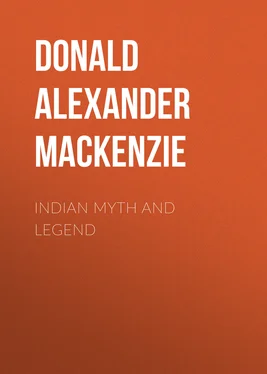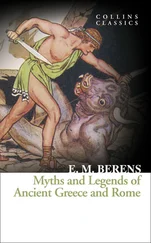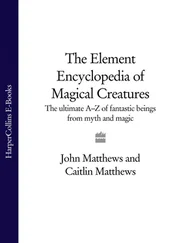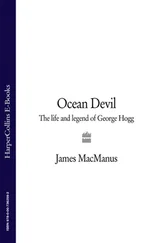Donald Alexander Mackenzie - Indian Myth and Legend
Здесь есть возможность читать онлайн «Donald Alexander Mackenzie - Indian Myth and Legend» — ознакомительный отрывок электронной книги совершенно бесплатно, а после прочтения отрывка купить полную версию. В некоторых случаях можно слушать аудио, скачать через торрент в формате fb2 и присутствует краткое содержание. Жанр: foreign_prose, foreign_religion, Философия, Мифы. Легенды. Эпос, foreign_psychology, foreign_antique, на английском языке. Описание произведения, (предисловие) а так же отзывы посетителей доступны на портале библиотеки ЛибКат.
- Название:Indian Myth and Legend
- Автор:
- Жанр:
- Год:неизвестен
- ISBN:нет данных
- Рейтинг книги:4 / 5. Голосов: 1
-
Избранное:Добавить в избранное
- Отзывы:
-
Ваша оценка:
- 80
- 1
- 2
- 3
- 4
- 5
Indian Myth and Legend: краткое содержание, описание и аннотация
Предлагаем к чтению аннотацию, описание, краткое содержание или предисловие (зависит от того, что написал сам автор книги «Indian Myth and Legend»). Если вы не нашли необходимую информацию о книге — напишите в комментариях, мы постараемся отыскать её.
Indian Myth and Legend — читать онлайн ознакомительный отрывок
Ниже представлен текст книги, разбитый по страницам. Система сохранения места последней прочитанной страницы, позволяет с удобством читать онлайн бесплатно книгу «Indian Myth and Legend», без необходимости каждый раз заново искать на чём Вы остановились. Поставьте закладку, и сможете в любой момент перейти на страницу, на которой закончили чтение.
Интервал:
Закладка:
The expository and speculative books of the priests—the Brahmanas and Upanishads —which are attached to the Vedic hymns, do not help us greatly in accounting for the change. We read that “the gods and Asuras contended together, and that the former, being less numerous than the latter, took some bricks, and placing them in a proper position to receive the sacrificial fire, with the formula, ‘Thou art a multiplier’, they became numerous”. 114In one of the Brahmanas we are informed:
“The Asuras performed at the sacrifice all that the Devas performed. The Asuras became thus of equal power with the Devas, and did not yet yield to them. Thereupon the Devas had a vision of the ‘silent praise’. The Asuras, not knowing it, did not perform the ‘silent praise’. This ‘silent praise’ is the latent essence of the hymns. Till then, whatever weapons the Devas used against the Asuras, the Asuras used in revenge against them; but when the Devas had a vision of the ‘silent praise’ and raised it as a weapon, the Asuras did not comprehend it. With it the Devas aimed a blow at the Asuras, and defeated them, for they had no comprehension of this weapon. Thereupon the Devas became masters of the Asuras. He who has such a knowledge becomes master of his enemy, adversary, and hater.” 115
This explanation is but an echo of the Indra-Vritra combat. Another statement is to the effect that “the Devas gave up falsehood and adopted truth, while the Asuras gave up truth and adopted falsehood”. Further, we learn that when a sacrifice was performed the Asuras put the offerings into their own mouths, while the Suras (gods) gave the offerings they received to one another.
The Asuras became completely identified with the demons and giants; they symbolized evil, darkness, and drought. In Epic literature we read that “in ancient times the gods and Asuras were very active in destroying one another. And the terrible Asuras always succeeded in defeating the gods.” … Indra goes forth with his thunderbolt against Kesin, the leader of the Asuras, who wielded a great mace; this mace the demon hurled against the god, but Indra “cut it up in its course with his thunderbolt. Then Kesin, furious with rage, hurled a huge mass of rock at him.” Indra “of a hundred sacrifices rent it asunder with his thunderbolt, and it fell down upon the ground. And Kesin himself was wounded by that falling mass of rock. 116Thus sorely afflicted he fled”. Indra rescues a beautiful lady who had been seized by the Asura, and she informs the god that her sister had previously fallen a victim to the demon.... 117
The Asuras obstructed sacrifices; they were ever hovering round altars to discover if rites were properly performed; if a priest did not perform a ceremony in orthodox fashion, the sacrifice was of no avail, because the Asuras devoured it; if a man neglected a part of a ceremonial performance, a demon might take possession of him and accomplish his ruin.
One of the terrible Asuras is the demon Rahu, who causes eclipses by swallowing the sun and the moon, like the Chinese dragon, the wolf Managarm of Teutonic mythology, and the Grecian demons who devour Helena, the sun maiden, sister of the twin Dioscuri. In the Vedic period Rahu was represented by the demon Svarbhanu.
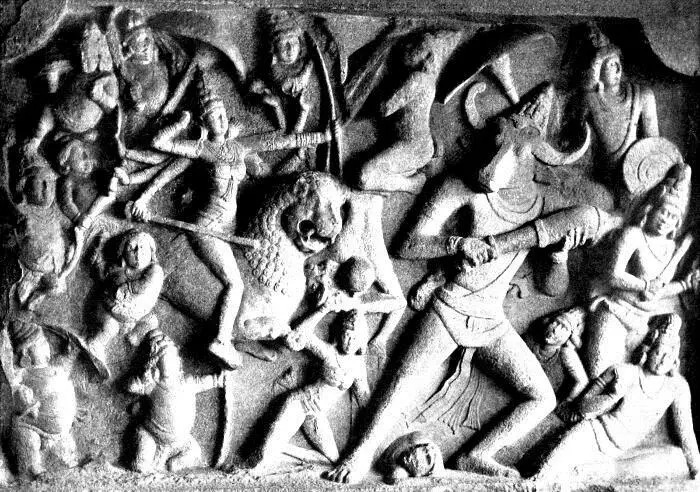
13
DURGA SLAYING GIANTS AND DEMONS
From a sculpture at Mámallapuram
The Asuras of Ocean are the Daityas and Danavas, the descendants of the chaos hags Diti and Danu, and Kasyapa, a superhuman sage. These are the giants and demons who fought against the gods like the Titans, the Irish Fomorians, and the Norse Jotuns. Indra confined them in this region, which is called Patala, and they remain there “afflicted by Time”, 118and subject to the sway of Varuna. Like the Norse giants, they will be let loose to take part in the “Last Battle”. An “Asura fire” burns constantly in Patala, fed by water; it is “bound and confined”, but cannot be extinguished; when the end of all comes, it will burst forth and burn up the three worlds. 119In Teutonic mythology the Universe is similarly doomed to be consumed by fire at Ragnarok, “the Dusk of the Gods”.
The abodes of these giants and demons are exceedingly beautiful; they are agleam with gold and precious stones; seats and beds are provided in the mansions, and there are also recreation grounds, and forests and mountains resembling clouds. Indeed, the Daityas and Danavas live pretty much in the same manner as the gods, for “the gods and Danavas are brothers, although ever hostile to one another”. 120The Danava women are of gigantic stature, and wear jewels as large as mountain boulders; when terrified by the attacks of the gods, they “bewail like unto cranes in Autumn”. One of the Daitya tribes reside in the moving city named Hiranyapura, which they constructed for their protection; sometimes it sinks below the sea, or under the earth; at other times it soars across the heavens like the sun. Indra, as we have seen, has a similar aerial city.
In the Underworld dwell also the Nagas, the demoniac Cobras; they are of human form to the waist, the rest of their bodies being like those of serpents. Their king is Shesha, who is also named Vasuki and Karkotáka; he is sometimes represented with a thousand heads, and resembles Typhon, who fought with Zeus. In the Ramayana he is Ravana, the Demon of Ceylon. The prototypes of Shesha and his hosts are the dragons Vritra, “the encompasser”; Ahi, “the confiner”; and fierce Kushna, “the scorcher”, who spits out the sunset fires and burns up day.
When serpent worship became prevalent among the Aryans, the Nagas were regarded as demigods. They were occasionally “the friends of man”, and to those they favoured they gave draughts of their nectar, which endowed them with great strength. Their city was the Paradise of serpent worshippers. The female Nagas were beautiful nymphs, who were sometimes wooed by mortals.
As the Asuras are the enemies of the gods, the Rakshas or Rakshasas are the enemies of man. 121These demons are “night prowlers”; they have greatest power after “the first forty seconds of grey twilight preceding nightfall”. They travel faster than the wind, and go through the air; they have also power to change their shape. Sometimes they appear in the guise of tigers, bears, or great monkeys; and their hues vary from yellow to red, and blue to green. In the Ramayana they are found associated with the Asuras of Ceylon; a spy enters a demon dwelling and sees them in all their shapes, some frightfully deformed, with small bodies and long arms; some as grotesque dwarfs, others as horrible giants with long projecting teeth; some with one eye, others with three eyes; some with one leg, two legs, or three, or even four; and some with heads of serpents, horses, or elephants. In the Mahabharata the Rakshasas are like gorillas; they have arrow-shaped ears, big red eyes, and red hair and beards, and mouths like caves; they feast on human beings and cattle. The heroic Bhima, like Siegfried Dietrich of Bern, Beowulf, and Finn-mac-Coul, is a mighty slayer of these man-eating demons. They are impervious to weapons, but Bhima wrestles with them and breaks their backs or tears them asunder, after lively combats with trees and boulders. Female Rakshasas sometimes fall in love with human beings, and transform themselves into beautiful women. Bhima takes one for his bride, and she carries him through the air to a Celestial retreat among the mountains.
The most loathsome Rakshasas are the goblin-like Pisachas, 122who are devourers of dead bodies in cemeteries, and are exceedingly vile and malignant fiends. They are the bringers of diseases and wasting fevers. In the Atharvaveda Agni is invoked by the priests, who mutter charms over suffering and “possessed” mortals, to take the Pisachas between his teeth and devour them. They are “those who hound us in our chambers, while shouting goes on in the night of the new moon … the flesh devourers, who plan to injure us, and whom I overcome”. The priest declares: “I plague the Pisachas as the tiger the cattle owners. As dogs who have seen a lion, these do not find a refuge.... From villages I enter Pisachas fly away.... May Nirriti (a goddess of destruction) take hold of this one.” 123
Читать дальшеИнтервал:
Закладка:
Похожие книги на «Indian Myth and Legend»
Представляем Вашему вниманию похожие книги на «Indian Myth and Legend» списком для выбора. Мы отобрали схожую по названию и смыслу литературу в надежде предоставить читателям больше вариантов отыскать новые, интересные, ещё непрочитанные произведения.
Обсуждение, отзывы о книге «Indian Myth and Legend» и просто собственные мнения читателей. Оставьте ваши комментарии, напишите, что Вы думаете о произведении, его смысле или главных героях. Укажите что конкретно понравилось, а что нет, и почему Вы так считаете.
